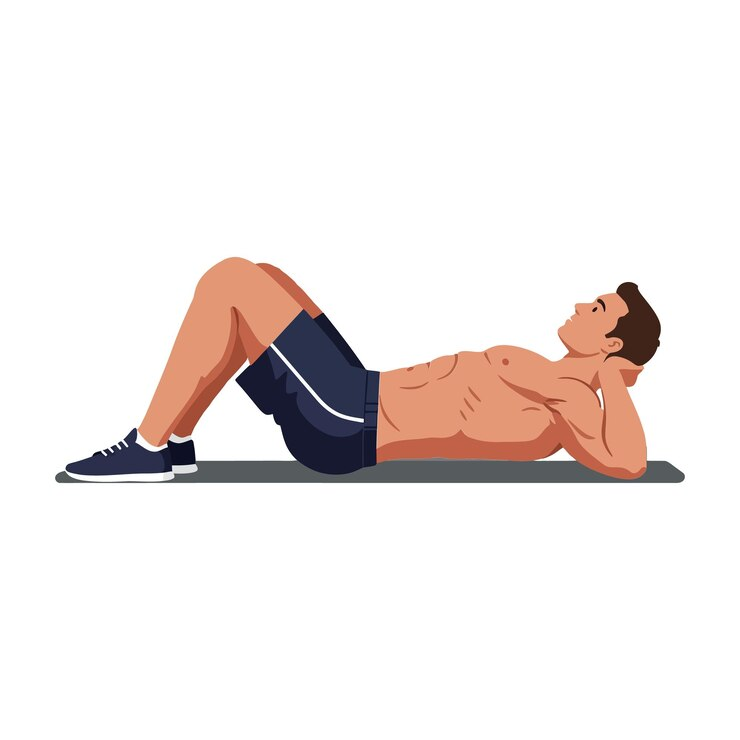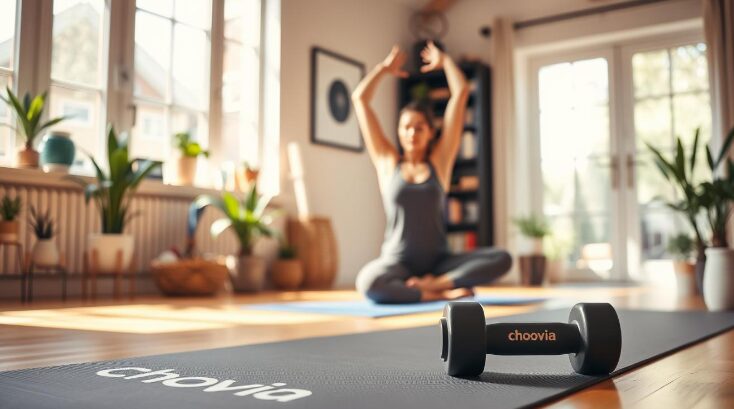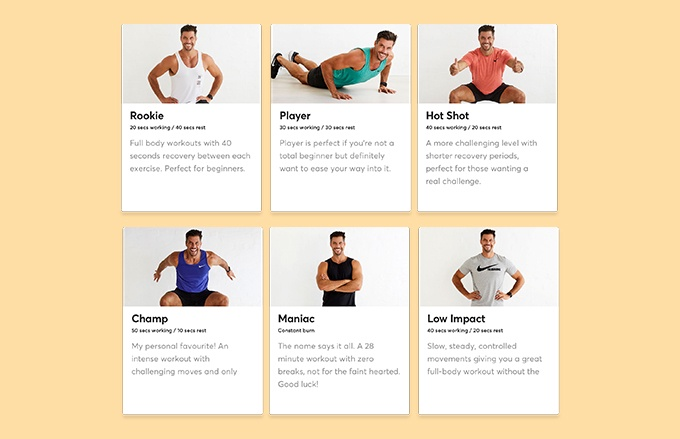Living in a small apartment doesn’t mean your fitness goals have to take a back seat. In fact, with a bit of creativity and the right routine, your living room (no matter how compact) can double as a powerful workout zone. The key? Choosing cardio exercises for small living room that deliver results without demanding much space or equipment.
Think about starting your morning with a quick, energizing session that fits comfortably between your couch and coffee table. From high knees and jumping jacks to burpees, mountain climbers, and even shadow boxing, these bodyweight moves are tailor-made for tight spaces but still get your heart rate soaring. They’re not just space-savvy, they’re seriously effective. Here is the best cardio exercises that we choose for you:
The Top 10 cardio exercises for small living rooms

High-Intensity Cardio Exercises (HIIT)
- Jumping jack variations: are a great way to kick off any home cardio routine. Tweaking the movement to think side-to-side or front-to-back hops not only ups the intensity but also keeps things interesting, all without requiring much space. They’re fast, effective, and perfect for getting your heart rate up quickly.
- Burpees: are another go-to for high-intensity training. While they’re typically known for their explosive jumps, they can easily be modified for smaller spaces. Skip the jump and focus on quick, clean transitions between standing and plank positions for a version that’s just as effective without crashing into your coffee table.
- Mountain climbers: are a full-body burner that lights up your core while keeping your heart rate high. Best of all, they barely need any space. You can ramp up the challenge by speeding up your pace or adding twists like cross-body climbers to engage even more muscle groups.
- high knees: are a simple but powerful choice. Drive your knees up toward your chest in quick succession, and you’ll fire up your core, legs, and cardiovascular system in no time.
- Squat jumps: round out the lineup, bringing explosive strength training into the mix. Even in a compact area, these will challenge your lower body and endurance—ideal for those who want to add power to their cardio routine.
From high knees and jumping jacks to modified burpees and squat jumps, these movements prove that small space doesn’t mean small results.
Low-Impact Cardio Alternatives
- Step-ups (using couch/chair): Step-ups are a great low-impact cardio exercise that helps build leg strength and endurance. By stepping onto a sturdy surface, such as a couch or chair, you engage your quads, glutes, and hamstrings. To increase the intensity, try alternating your legs or adding knee raises at the top of the step-up. This exercise offers a full-body workout without harsh impact on your joints.
- Shadow Boxing: Shadow boxing is an effective cardiovascular workout that can be done anywhere with no equipment. By throwing punches in the air while moving your feet, you work your upper body, core, and lower body. It also helps improve coordination, agility, and mental focus. The best part is that you can vary the intensity by adjusting the speed of your punches or incorporating footwork to keep the heart rate elevated.
- Dancing Workouts: Dancing workouts are a fun and engaging way to get your heart pumping without high-impact stress on your joints. From Zumba to hip-hop, you can choose the style that matches your fitness level. The rhythmic movements help tone muscles while boosting cardiovascular health. These workouts also help improve coordination and flexibility, all while having a blast!
- Marching in Place: Marching in place is a low-impact exercise that still gets your heart rate up. This simple movement mimics the motion of walking, but it can be done indoors without much space. You can increase the intensity by lifting your knees higher or adding arm movements to engage your upper body. It’s an ideal choice for beginners or those recovering from injury.
- Wall Sits: Wall sits are an excellent isometric exercise that targets the legs, particularly the quads. By leaning against a wall with your knees bent at 90 degrees, you hold the position as long as you can. While it doesn’t elevate your heart rate as much as other cardio exercises, it builds strength and endurance in the lower body, complementing your overall fitness routine.
Common Mistakes & Safety Tips

When doing cardio in a small living room, safety and efficiency should be top priorities. One of the most common missteps? Skipping the warm-up. It might feel tempting to dive right in, especially when you’re short on time, but a proper warm-up preps your muscles, boosts circulation, and lowers the risk of injury. Just a few minutes of light movement like marching in place, step-touching, or gentle arm swings—can make a big difference in how your body handles more intense activity.
Another issue that pops up in tight spaces is poor form. When you’re maneuvering around furniture or trying not to hit a wall, it’s easy to sacrifice posture for convenience. This can lead to awkward alignment or even minor injuries, especially with moves like shadow-boxing, burpees, or step-ups. To stay safe, focus on controlled, deliberate movements, and make sure you have enough clearance to move freely. Take your time, and listen to your body—rushing isn’t worth the strain.
Noise is also a practical concern, particularly if you live in an apartment or have downstairs neighbors. High-impact exercises like jumping jacks or plyometric lunges can be disruptive. If that’s an issue, try lower-impact alternatives like marching, low-impact jacks, or even dance-inspired steps that get your heart rate up without rattling the floor.
And don’t forget the basics, hydration matters. It’s surprisingly easy to skip water breaks when you’re working out at home. Staying properly hydrated helps with energy, recovery, and overall performance. If you’re unsure how much water you need, check out our free water intake calculator to estimate based on your workout intensity and duration.
Lastly, make sure your workout space is well-ventilated. Crack a window or use a fan to help regulate your temperature and keep your session comfortable from start to finish. Small space or not, your cardio routine can still be safe, effective, and enjoyable with just a little planning and awareness.
Conclusion
Incorporating cardio exercises for small living rooms is a great way to stay active without needing a large workout space. By being mindful of common mistakes such as inadequate warm-up, poor form in confined spaces, and noise considerations, you can maximize your workout’s effectiveness while maintaining safety. Don’t forget to hydrate and ensure proper ventilation to maintain comfort and prevent injury.
For more information on the benefits of low-impact cardio and tips for maintaining a healthy lifestyle, check out : CDC’s Guidelines on Physical Activity







